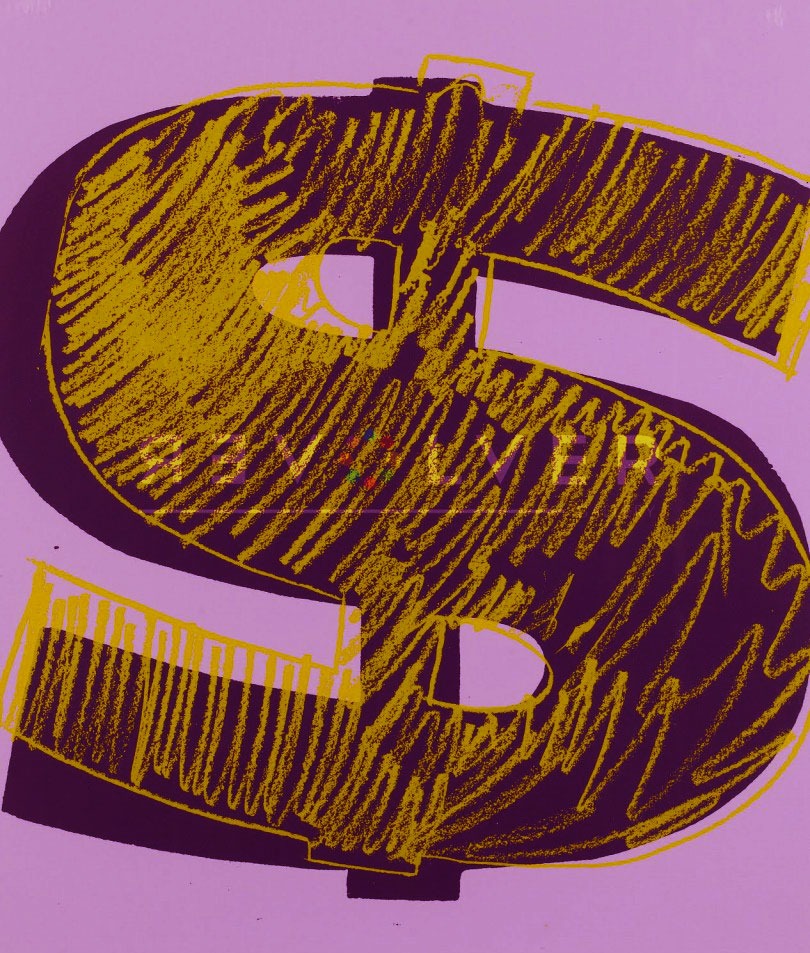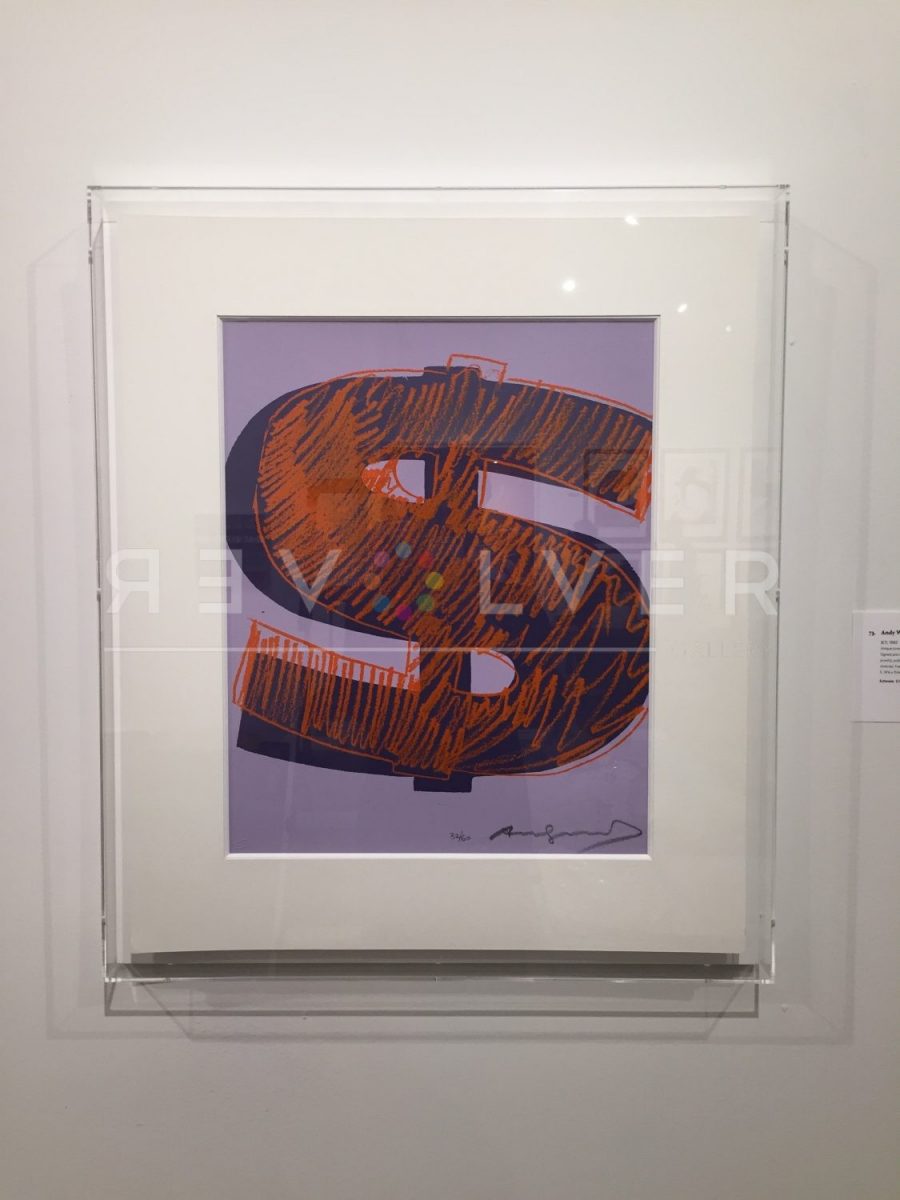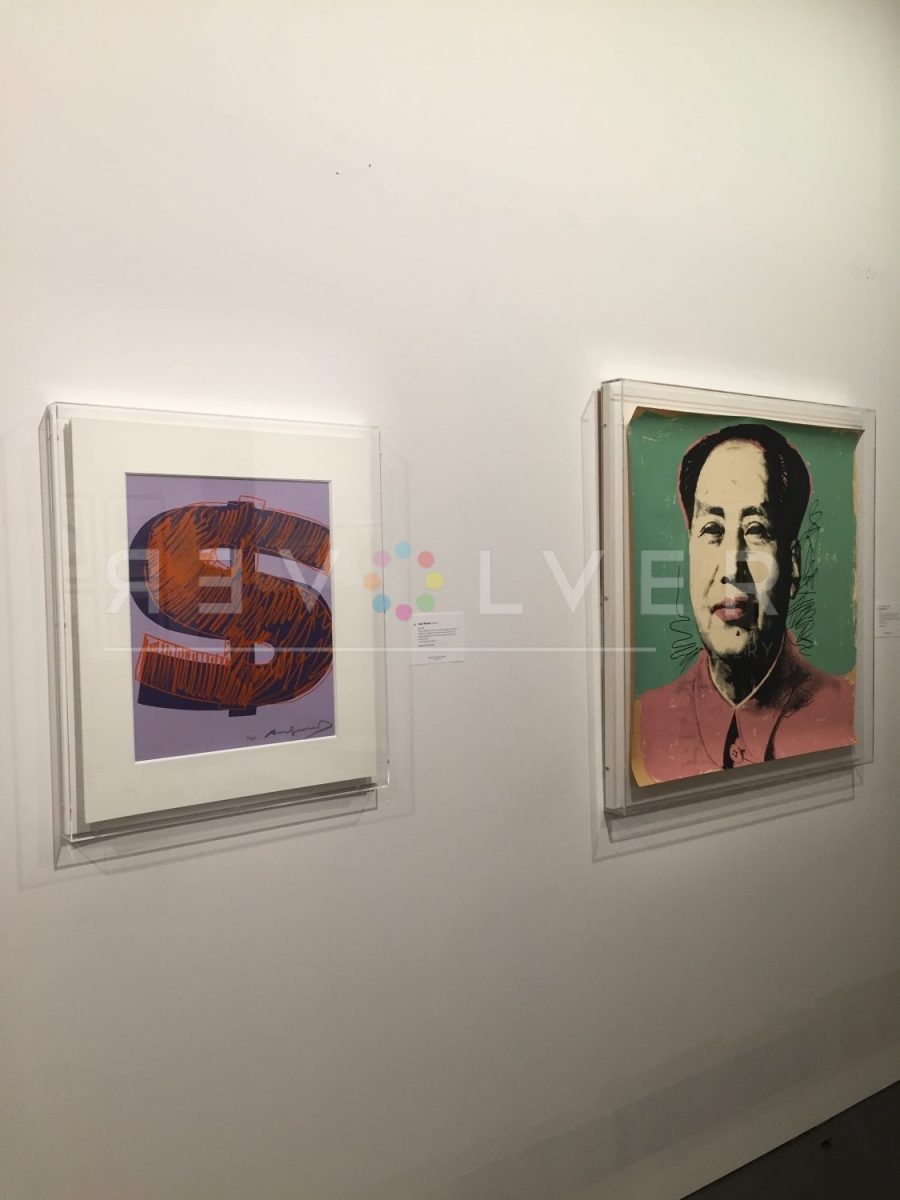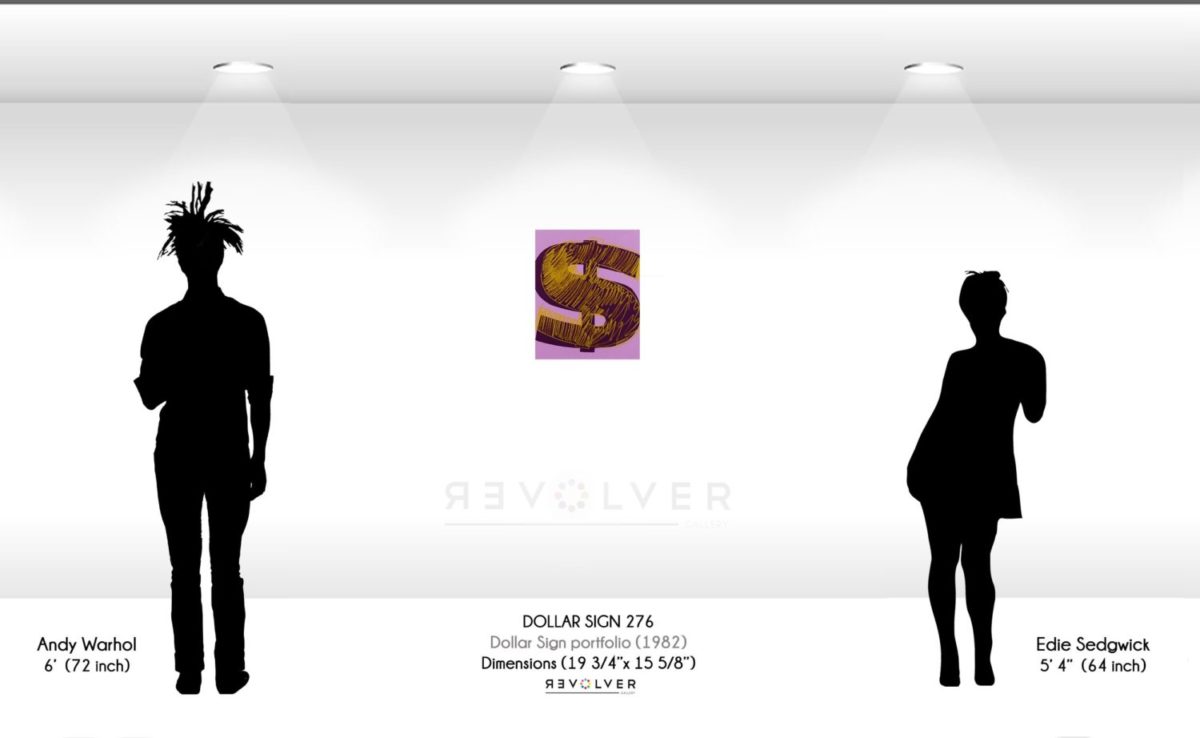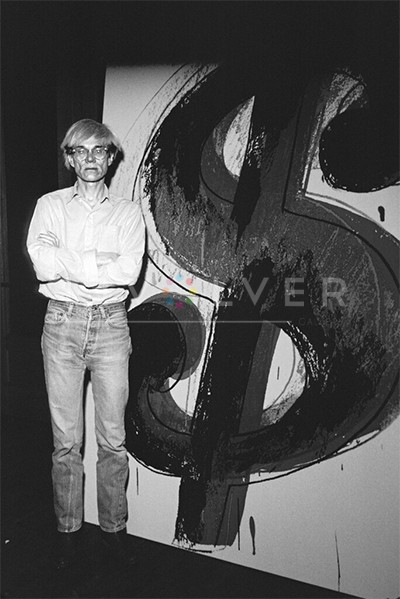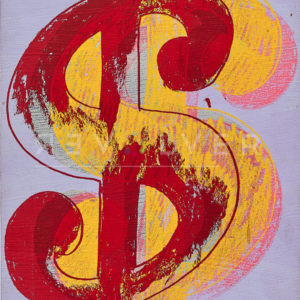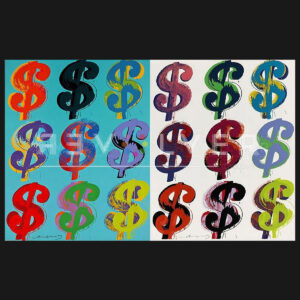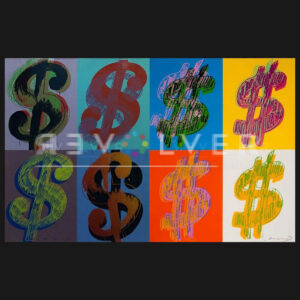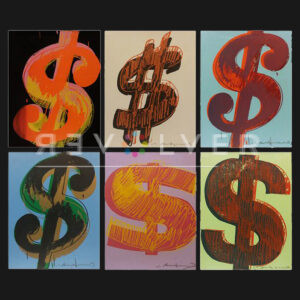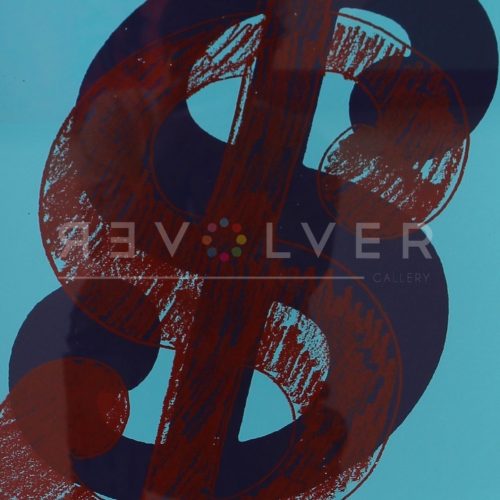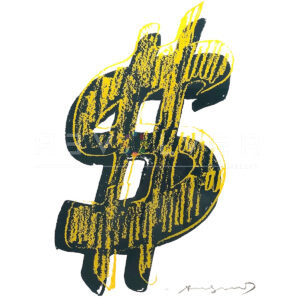Dollar Sign 276 by Andy Warhol is one of six screenprints included in his famous Dollar Sign portfolio from 1982. This work features a yellow sketchy dollar sign symbol casting a dark purple shadow onto the light purple background. As the world’s most famous business artist, Dollar Sign is a triumph of Warhol’s artistic philosophy. Warhol loved money above all else. The spirit of the dollar sign runs throughout his entire catalogue, and finally emerges in 1982 with the creation of one of the artist’s most sacred series.
Although the design in Dollar Sign 276 is relatively simple, the use of complementary colors makes for an exciting composition. Warhol repeated this vibrant arrangement in different colors six times for each print. The entire series includes multiple variations, printed on Lenox Museum Board in a variety of bold colors.
This series represents Andy Warhol’s fascination with money and fortune. He once wrote in The Philosophy of Andy Warhol, “I like money on the wall. Say you were going to buy a $200,000 painting. I think you should take that money, tie it up, and hang it on the wall. Then when someone visited you the first thing they would see is the money on the wall.” By creating his Dollar Sign portfolio, Warhol quite literally put money on the wall, welcoming the viewer to ponder the all-encompassing power of his pop-art.
Warhol is famous for his attraction to consumer culture and capitalism, and both are recurring themes in his body of work. Warhol even dubbed his studio “The Factory,” seeking to create art in an almost assembly line style. Inspired by the manufacturing methods of the post-war era, he sought to reach an unprecedented level of artistic output. The Dollar Sign series strongly encapsulates Warhol’s fascination for money and commerce.
Dollar Sign 276 is amongst some of Warhol’s most notable works. Like his Coca-Cola images and Campbell’s Soup cans, Dollar Sign series emphasizes American consumerism, reflecting the artistic power of our society’s common materials back to the consumer. Warhol once said that, “big-time art is big-time money,” and that “good business is the best art”. The theme of money has been popular in Warhol’s work since the 1950s, when he first drew a tree with money growing from the branches. In the 1960s, Warhol created a series of prints depicting the dollar bill. This fascination with money continued into the 1980s, and climaxed with his Dollar Sign series, which is perhaps Warhol’s philosophical climax as well.
In the same year that Warhol created his Dollar Sign portfolio, he also completed the Dollar Sign (Quadrant) portfolio and the Dollar Sign (9) portfolio, all of which are available at Revolver Gallery. These other portfolios exhibit the dollar sign in various modes of repetition and arrangement. 1982 was a successful year for the artist, and he created many works out of this same dollar sign design.
The Dollar Sign portfolio was first shown at the Castelli Gallery in New York City in. Warhol wrote in his diary about his experience at the opening, writing, “Another big opening of mine—a double—Dollar Signs at the Castelli on Greene Street and Reversals at the Castelli on West Broadway…it was like a busy sixties day.”
Warhol’s Dollar Sign 276 is a perfect example of his trademark style, with its bright color pallet and tongue-in-cheek presentation. He seizes the recognizable symbol and turns it into a quintessential Warhol composition. In the end, perhaps there is nothing more Warholian than a dollar sign.
Photo credit: Andy Warhol with Dollar Sign painting, New York, 1982. Image: © Santi Visalli, Artwork: © 2022 The Andy Warhol Foundation for the Visual Arts, Inc. / Licensed by DACS, London

